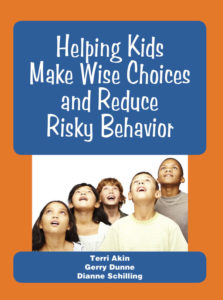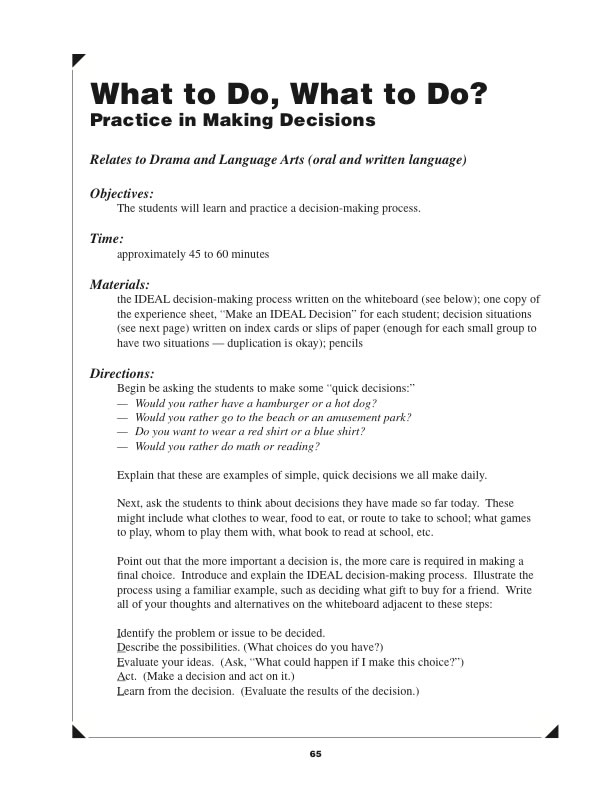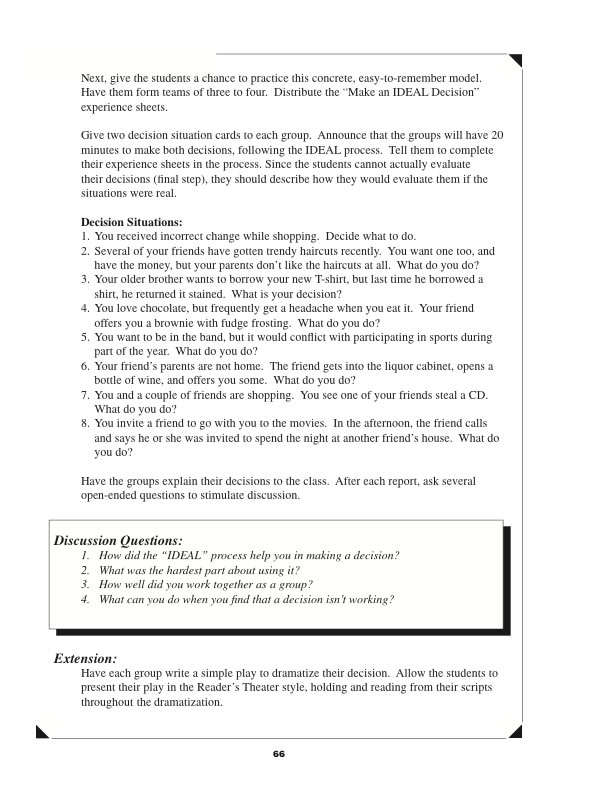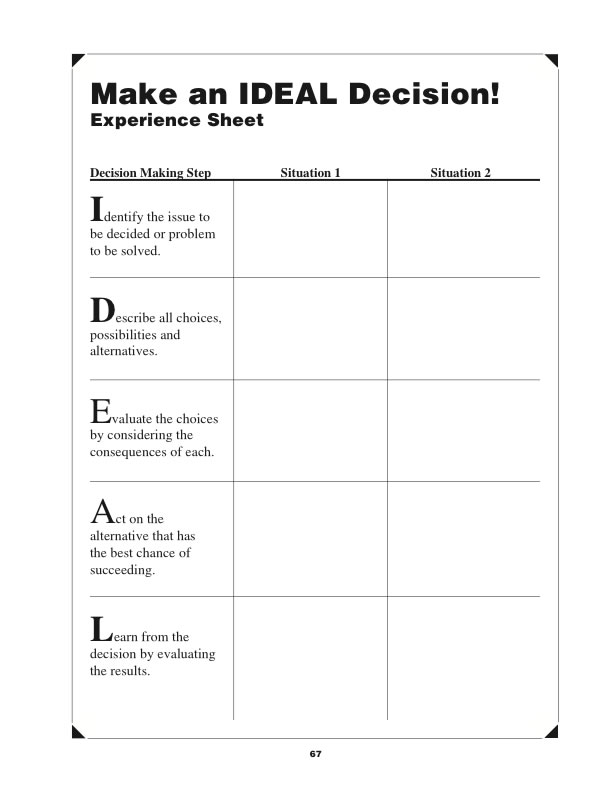Kids make choices every hour of every day — what to read, what to wear, where to sit, what to say. The majority of their choices are routine, the bulk of those relatively inconsequential. It’s not very important what TV show Nancy watches, who Joseph invites to the party, or which hill Mario flies down on his skateboard — or is it? While nothing can guarantee a student’s safety, one thing is certain: When a student makes wise choices, risky behavior is automatically reduced. The instinct for self-preservation is a powerful force, but so are the advertising, peer pressure and promises of instant gratification that lure us to eat junk foods, fill our lungs with killer chemicals and take foolish risks in pursuit of quick thrills. Students who have not been given guided practice in choice-making from an early age (“Do you want apples or a pears?” “If you choose to play soccer on Saturdays, what will you have to give up?”) are more apt to choose out of habit or whim than out of any systematic consideration of alternatives and their potential consequences. The more complex or problematic the issue, the more critical a student”s ability to activate a logical, informed approach to decision making. Without this ability, the student will have little choice but to fall back on old habits, or fall in with the crowd.

Factors That Influence Choice-Making Perhaps the simplest form of choice is between “yes” and “no,” between doing something and not doing it. But when you think about the potentially life-changing questions that can be answered with yes or no, it no longer seems so simple. Whether a student says yes or no to drugs, for example, involves a great many variables, among them:
- Self-esteem.
- Role models.
- Values.
- Emotional intelligence.
- Sense of efficacy.
- Accountability.
- Information.
- Ability to Apply a Decision-Making Process.
- Support system.
This week’s activity comes from the book Helping Kids Make Wise Choices and Reduce Risky Behavior. As the title implies, this book has two purposes. One is to help students learn to make wise choices. The other is to reduce risky behavior. While making wise choices automatically reduces risky behavior, several risks commonly associated with growing up in our society deserve focused consideration. For this reason, specific activities in this book are devoted to providing information about the dangers of smoking and the safe use of over-the-counter (OTC) drugs. Others teach students how to respond in potentially dangerous or emergency situations and how to resist peer pressure through assertive communication and well-rehearsed refusal skills. Many of the factors that influence choice making are also addressed in this book. Activities build self-esteem, promote healthy lifestyle choices, introduce stress management strategies, teach decision-making and problem-solving skills, deal candidly with anger management, and encourage the use of positive role models and friendships along with broad support systems.
Here’s Your Activity and Experience Sheet 


You can check the book out HERE.
Just click HERE to open a fully reproducible PDF of this activity and experience sheet…
If you like our blog resources and would like to receive them regularly, please subscribe here or on our website at www.InnerchoicePublishing.com
If you are already a subscriber, I hope you find this activity valuable. Help us grow our blog by sharing these activities and encouraging others to join. Thank you.
Thanks so much for reading!
Susanna
